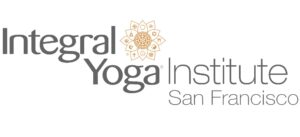At any moment, or stage of your life, take the pathway that feels the easiest and the most enjoyable. At one point, it might be the path of Bhakti (devotion and surrender), which is all about sensing and feeling into the heart. At another stage, in response to your mind’s objections, you may find yourself grappling with more existential, philosophical questions and you can go to the path of jnana (self-inquiry).
So, follow the easiest and most enjoyable path while remaining open to change. Try not to put yourself into a box by saying, “Oh, I’m just a Hatha Yogi or a Karma Yogi.” Or, “I only go via the path of Raja Yoga.” Maybe at one point in your spiritual journey you are drawn to the path of Bhakti Yoga, but, several years later, you may feel more drawn to Jnana Yoga, the path of wisdom. Or, at another time in your spiritual development, you may feel drawn to yet a different approach.
This is a foundational understanding behind the Integral Yoga system: You are given six different branches or pathways of classical Yoga so that you gain the benefits of these approaches. That will ensure that the entirety of your experience is permeated by the yogic understanding of your essential nature. Ideally, Yoga will infuse all aspects of your experience: the way you think, the way you feel, how you perceive, the way you act and relate, and so on: a complete integration of body-mind-spirit.
When practicing Integral Yoga, some people may be drawn to one particular branch. For example, some may wish to follow an inward facing path, such as in contemplation or meditation. Others may be more drawn to an outward facing path, such as in Karma Yoga, during which one turns toward being of service in the world.
These branches, or pathways, are not mutually exclusive. They provide a holistic approach to integration. Ideally, if you are drawn to one particular pathway, you will also find benefit in including even a little something from each branch. It’s very unusual for one pathway to satisfy all one’s faculties of thinking, feeling, sensing, perceiving, acting, and relating. Through our practice, we want every part of ourselves to become fully included in—and integrated into—our understanding of the essential truth of our being, which is inner peace and joy.

